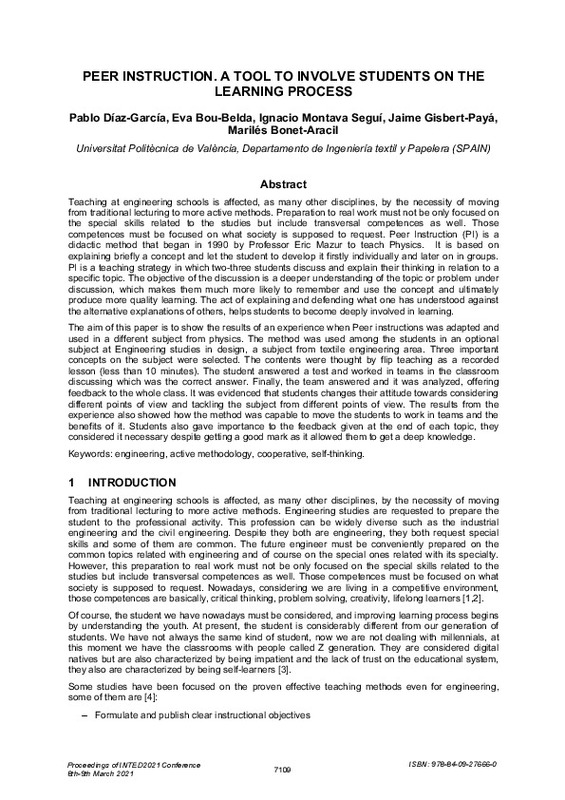|
Resumen:
|
[EN] Teaching at engineering schools is affected, as many other disciplines, by the necessity of moving from traditional lecturing to more active methods. Preparation to real work must not be only focused on the special ...[+]
[EN] Teaching at engineering schools is affected, as many other disciplines, by the necessity of moving from traditional lecturing to more active methods. Preparation to real work must not be only focused on the special skills related to the studies but include transversal competences as well. Those competences must be focused on what society is supposed to request. Nowadays, considering we are living in a competitive environment, those competences are basically: critical thinking, problem solving, creativity, lifelong learners [1,2]
Pear Instruction (PI) is a didactic method that began in 1990 by Professor Eric Mazur to teach Physics. It is based on explaining briefly a concept and let the student to develop it firstly individually and later on in groups. PI is a teaching strategy in which two-three students discuss and explain their thinking in relation to a specific topic. The objective of the discussion is a deeper understanding of the topic or problem under discussion, which makes them much more likely to remember and use the concept and ultimately produce more quality learning. The act of explaining and defending what one has understood against the alternative explanations of others, helps students to become deeply involved in learning [3].
The aim of this paper is to show the results of an experience when Peer instructions was adapted and used in a different subject from physics. The method was used among the students in an optional subject at Engineering studies in design, a subject from textile engineering area. Three important concepts on the subject were selected. The contents were thought by flip teaching as a recorded lesson (less than 10 minutes). The student answered a test and worked in teams in the classroom discussing which was the correct answer. Finally, the team answered and it was analyzed, offering feedback to the whole class. It was evidenced that students changes their attitude towards considering different points of view and tackling the subject from different points of view. The results from the experience also showed how the method was capable to move the students to work in teams and the benefits of it. Students also gave importance to the feedback given at the end of each topic, they considered it necessary despite getting a good mark as it allowed them to get a deep knowledge.
[-]
|









